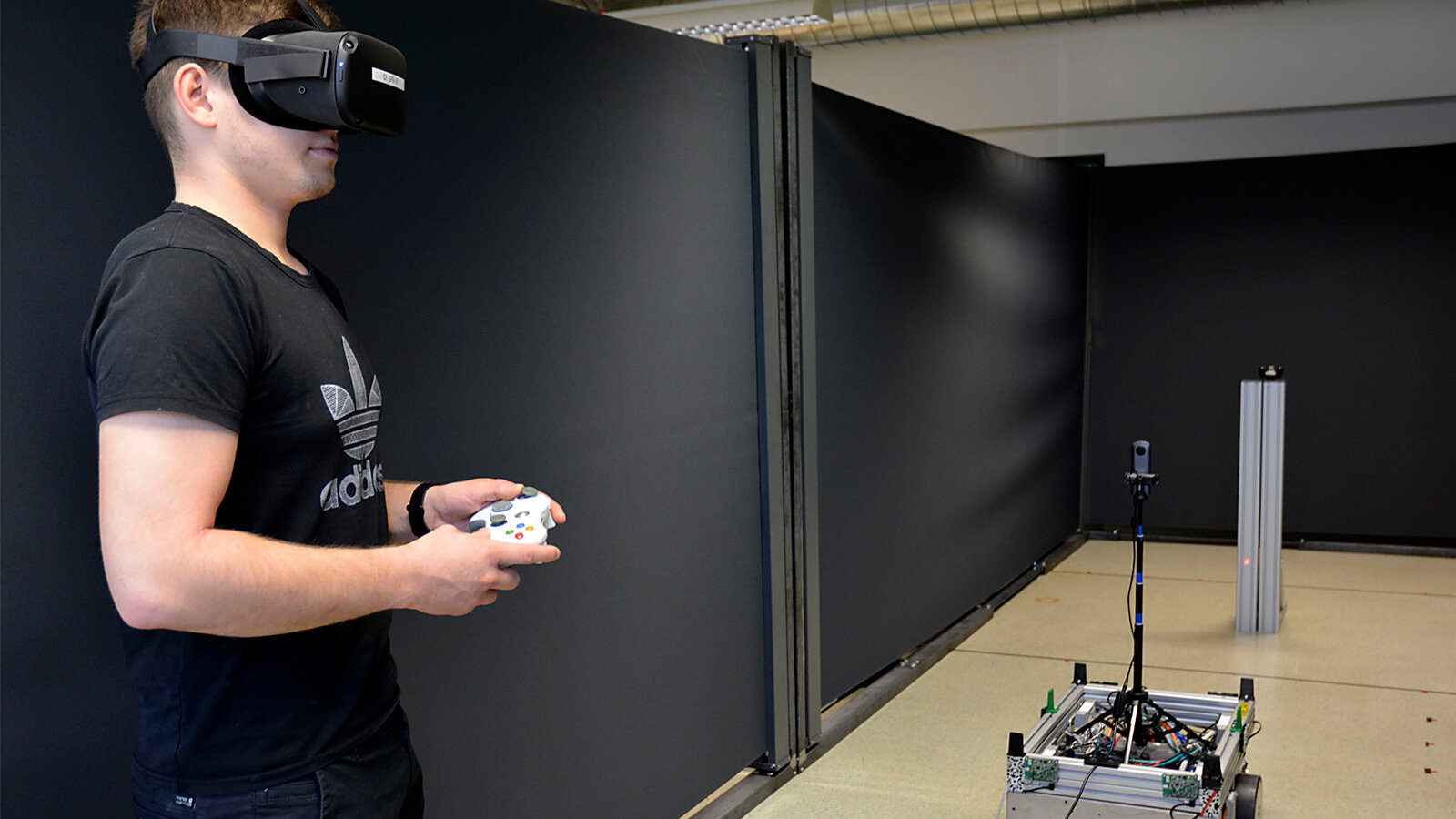Test subjects wanted: How well can we estimate distances in VR?
In a new study, scientists from the Professorship of Production Systems and Processes at Chemnitz University of Technology investigate how accurately people judge distances in a telepresence situation.
-

As part of a telepresence study, test subject Marcel Krüger estimates the distance of the driverless transport vehicle based on a video projection shown on the head-mounted display. Photo: Katja Klöden
University of Technology, scientists from the Professorship of Production Systems and Processes (Head: Prof. Dr.-Ing. Martin Dix) want to find out in their new study led by Dr.-Ing. Philipp Klimant whether and how people can estimate distances in a situation transmitted via video to VR goggles.
The scientists are currently still looking for test subjects for the main study planned for fall 2022. The test subjects must be at least 18 years old, have normal or corrected vision, must not be color blind, and must not have any physical limitations that prevent them from wearing a head-mounted display and operating a controller.
The current research project is a subproject for the Collaborative Research Center "Hybrid Societies" under the direction of the Professorship of Applied Geropsychology and Cognition (Head: Prof. Dr. Georg Jahn) and the Professorship of Production Systems and Processes and focuses on spatial orientation when using telepresence systems.
The team of the Professorship of Production Systems and Processes of Chemnitz University of Technology is also continuously looking for test subjects for further virtual reality or telepresence studies. Interested parties can register now by emailing Jennifer Brade at jennifer.brade@mb.tu-chemnitz.de, tel. 0371 531-33513. In addition, the Professorship of Production Systems and Processes offers research topics for student projects with a focus on telepresence and virtual reality, respectively.
Background: Procedure of the study
To investigate individual distance perception in telepresence applications, the researchers designed a scenario: An operator is supposed to remotely control a driverless transport vehicle without any accidents, without being on site. A 360-degree camera transmits live images of the vehicle's position in its environment to a head-mounted display. The test subject is now supposed to estimate the distance of the vehicle to real obstacles as accurately as possible based on the video projection in the glasses. The question posed by the researchers at Chemnitz University of Technology is: How much do you underestimate or overestimate distances when you work with visual output devices instead of standing directly on site in the real environment? Which visual aids - such as superimposed guides, scales or objects of known size - facilitate distance estimation?
For further information, please contact Jennifer Brade, tel. +49 (0)371 531-33513, e-mail jennifer.brade@mb.tu-chemnitz.de.
(Author: Katja Klöden / Translation: Brent Benofsky)
Matthias Fejes
19.08.2022





